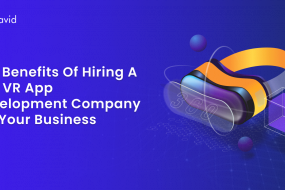The development of a metaverse can be a complex and expensive project. The cost of developing a metaverse will depend on a number of factors, including the size and scope of the metaverse, the complexity of the technology used, and the team of developers involved.
One of the most important factors that will affect the cost of developing a metaverse is the size and scope of the metaverse. A small metaverse that is only used by a few people will be much less expensive to develop than a large metaverse that is used by millions of people. The size of the metaverse will also affect the amount of storage space and bandwidth required, which can also drive up the cost of development.

The complexity of the technology used will also affect the cost of developing a metaverse. A metaverse that uses cutting-edge technology will be more expensive to develop than a metaverse that uses more traditional technology. The complexity of the technology will also affect the amount of time and effort required to develop the metaverse, which can also drive up the cost.
The team of metaverse developers involved will also affect the cost of developing a metaverse. A team of experienced developers will be more expensive to hire than a team of less experienced developers. The size of the development team will also affect the cost of development, as a larger team will require more resources and support.
In general, the cost of developing a metaverse can range from a few thousand dollars to millions of dollars. The cost of development will depend on the specific requirements of the project, so it is important to consult with a development team to get an accurate estimate.
The metaverse, a virtual realm where users can interact and engage in immersive experiences, is rapidly evolving and presenting immense opportunities for businesses and individuals alike. However, understanding the intricacies of metaverse development costs is crucial for successful implementation. This guide provides a comprehensive overview of the various factors influencing metaverse development costs, empowering readers to make informed decisions and optimize their project investments.
As technology continues to advance, the metaverse is poised to revolutionize the way we interact, communicate, and experience the digital world. With its immersive and interactive capabilities, it offers a wide range of applications, including gaming, social networking, education, and business. However, embarking on metaverse development requires a clear understanding of the associated costs to ensure project success and avoid potential pitfalls.
Factors Determining Metaverse Development Costs
Here is a list of factors that help to decide in metaverse development cost.
1. Platform Selection
- Virtual Reality (VR) and Augmented Reality (AR) Platforms: VR and AR headsets provide immersive experiences but require significant hardware investments for optimal performance.
- Game Engines: Unreal Engine and Unity are popular options for developing high-quality metaverse environments with advanced graphics and physics. They may incur licensing fees and require specialized skills.
- Blockchain Technology: Blockchain platforms like Ethereum and Polygon enable secure asset ownership and transactions within the metaverse, but can introduce complexities and transaction costs.
2. Infrastructure
- Servers: The number of servers required depends on the scale and user base of the metaverse, affecting hosting costs and performance.
- Data Storage: Storing large amounts of user data, such as avatars, creations, and interactions, requires scalable and reliable storage solutions.
- Networking: Optimizing network infrastructure is essential for ensuring low latency and seamless multiplayer experiences, which can involve bandwidth investments and hardware upgrades.
3. Content Development
- 3D Modeling and Animation: Creating detailed and engaging virtual worlds, objects, and characters requires skilled artists and expensive software tools.
- Game Design and Development: Designing and developing the gameplay, storylines, and quests for metaverse experiences is a complex and iterative process.
- User Interface (UI) and User Experience (UX): Intuitive and user-friendly interfaces are crucial for enhancing user engagement and retention.
4. External Services
- Cloud Computing: Utilizing cloud platforms for hosting, data storage, and processing can reduce infrastructure costs but may incur subscription fees.
- Legal and Financial Services: Seek professional guidance for intellectual property protection, user agreements, and financial management related to metaverse development.
- Marketing and Promotion: Effective marketing strategies are necessary to attract users and build a successful metaverse community.
Unveiling the Cost Spectrum: A Breakdown by Application
The metaverse caters to diverse applications, each with its own development cost range. Here’s a glimpse into some popular categories:
-
Metaverse Games: Metaverse games are at the forefront of this digital frontier. Building a basic metaverse game can start at around $30,000, but complexity reigns supreme. Creating intricate storylines, expansive virtual worlds, and engaging gameplay mechanics can push the cost upwards of $300,000.
-
Social Metaverse Platforms: Imagine replicating the social media experience in a 3D environment. Social metaverse platforms allow users to interact with avatars, participate in virtual events, and forge connections. Development costs range from $25,000 to $400,000, depending on the platform’s features and user capacity.
-
Metaverse Real Estate: The metaverse is fostering a new realm of virtual land ownership. Developing a metaverse real estate platform involves features like virtual property viewing, buying, and selling. This can cost anywhere between $35,000 and $300,000.
-
Metaverse Healthcare: The metaverse holds immense potential for healthcare. Imagine conducting virtual consultations, therapy sessions, or even remote surgeries within a simulated environment. Developing such platforms requires robust security measures and integration with healthcare IT systems, potentially costing $30,000 to $300,000.
Charting Your Course: Strategies for Cost Optimization
Developing a metaverse experience doesn’t have to break the bank. Here are some strategies to keep your project within budget:
-
Start Small, Scale Up: Begin with a Minimum Viable Product (MVP) focusing on core functionalities. This allows you to test the market and gather user feedback before investing heavily in complex features.
-
Embrace Open-source Tools: Utilize readily available open-source tools and libraries whenever possible. This reduces licensing costs and empowers your development team.
-
Prioritize Content Creation: Invest in high-quality content that sets your metaverse experience apart. Memorable 3D environments and engaging storylines can elevate a simpler platform.
-
Community Building and User Engagement: A thriving user base is essential for the success of any metaverse platform. Foster community engagement through interactive events and social features. This can attract investment and potentially offset development costs.
The metaverse development landscape is constantly evolving. As technology matures and development tools become more accessible, costs are expected to decrease. However, the cost will always be intertwined with your vision’s complexity and ambition. By carefully considering your application type, team structure, technology stack, and employing strategic cost-optimization techniques, you can embark on your metaverse development journey with a clear roadmap and a controlled budget. The metaverse holds immense potential, and with careful planning
Conclusion
Determining the cost of metaverse development requires a thorough analysis of multiple factors, including platform selection, infrastructure, content development, and external services. By carefully assessing these key considerations, businesses and individuals can make informed decisions, allocate budgets effectively, and maximize the return on investment in their metaverse projects. As the metaverse landscape continues to evolve, understanding the associated costs will remain essential for unlocking its transformative potential.











